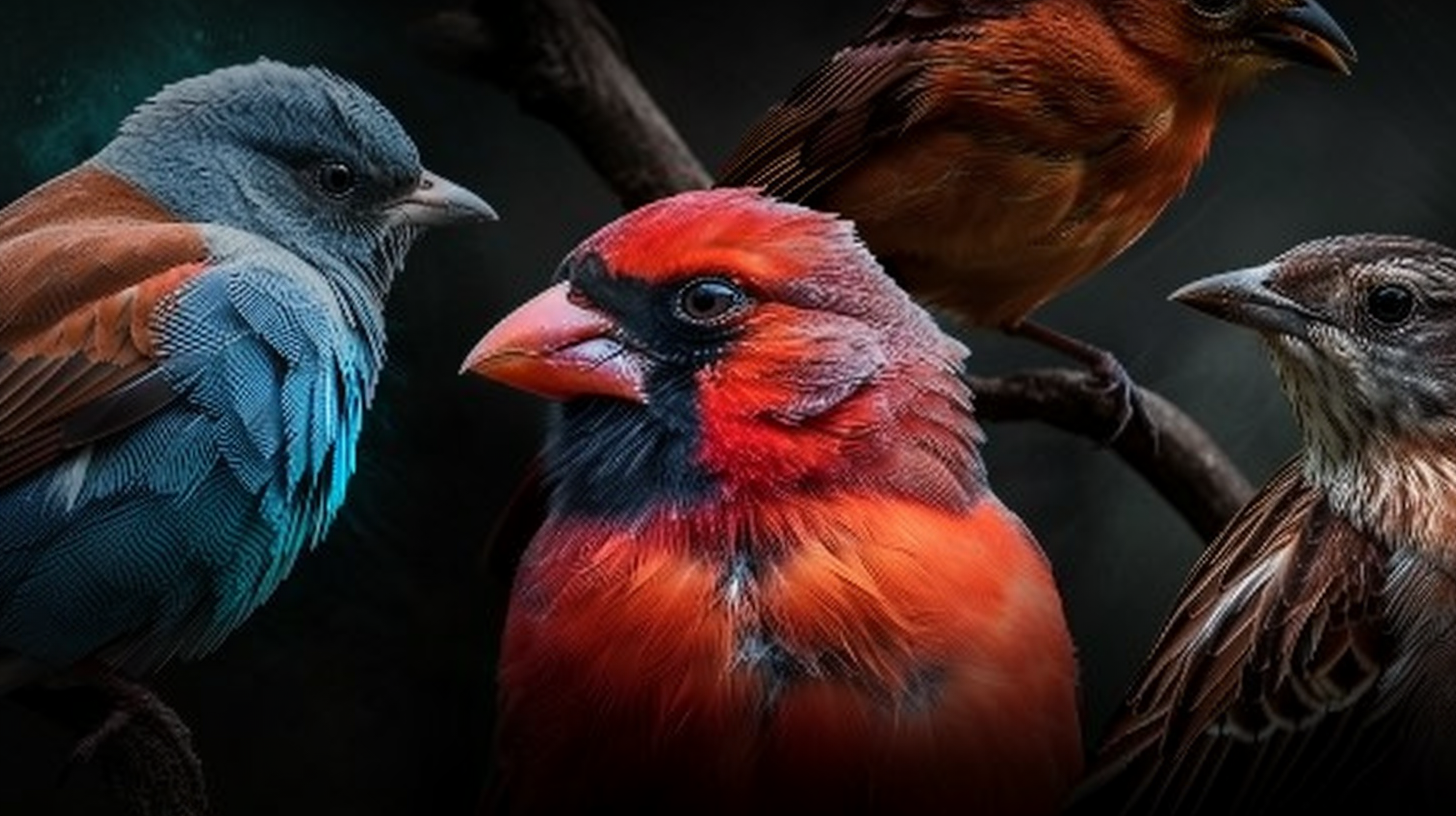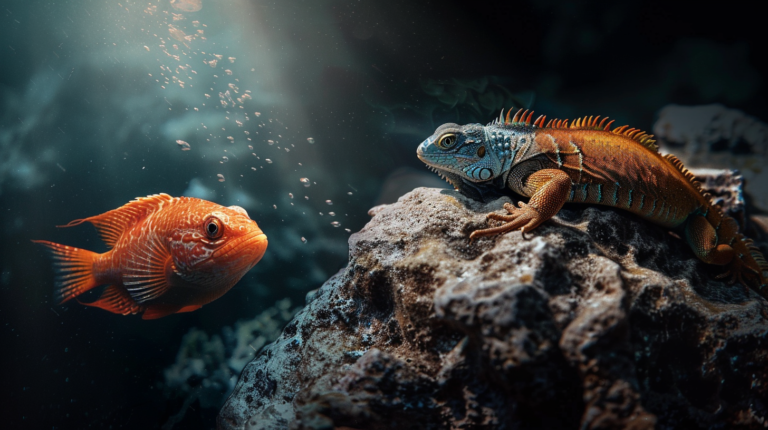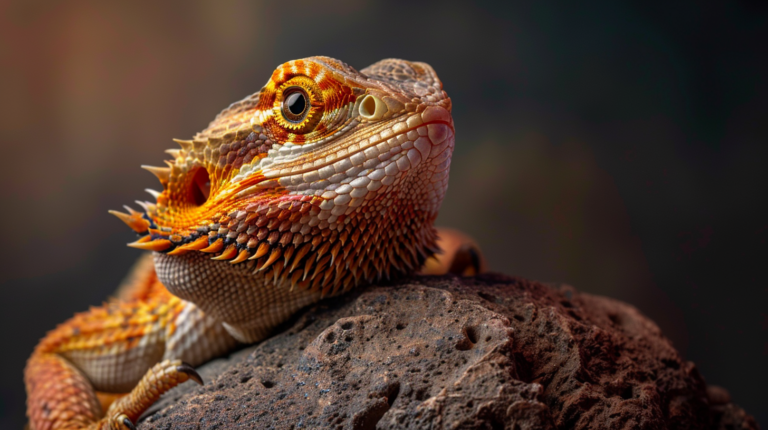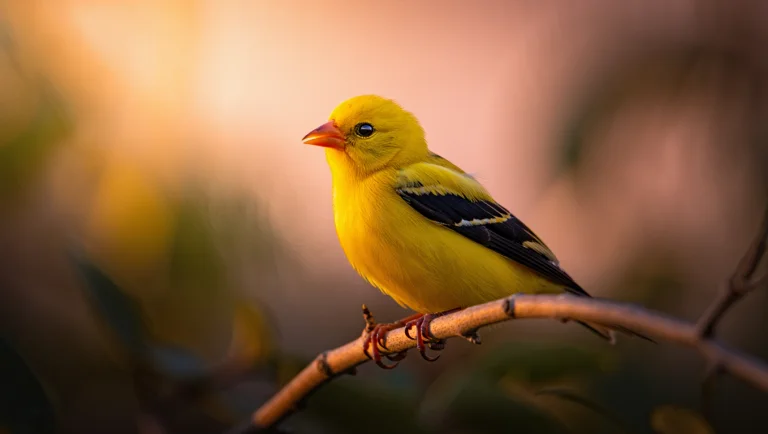Discover the 10 cool birds in nature with extraordinary abilities and appearances, from the genius African Grey Parrot to the falcon that breaks speed records. Learn what makes these feathered wonders truly remarkable!
Table of Contents
The avian world is filled with extraordinary creatures that captivate our imagination with their vibrant colors, remarkable abilities, and fascinating behaviors. From birds that can mimic human speech to those that dance to attract mates, cool birds come in all shapes, sizes, and capabilities. Whether you’re a seasoned bird enthusiast or simply curious about these feathered wonders, this exploration of nature’s most impressive avian species will leave you in awe of their evolutionary marvels.
Birds have conquered nearly every habitat on Earth, developing specialized adaptations that allow them to thrive in environments ranging from scorching deserts to freezing polar regions. In this article, we’ll dive into the world of the most cool birds that showcase nature’s creativity at its finest. Each featured species demonstrates unique abilities, stunning appearances, or behaviors that set them apart in the animal kingdom.
Let’s soar into the fascinating world of these incredible creatures and discover what makes them truly extraordinary.
1. The African Grey Parrot: The Einstein of Birds
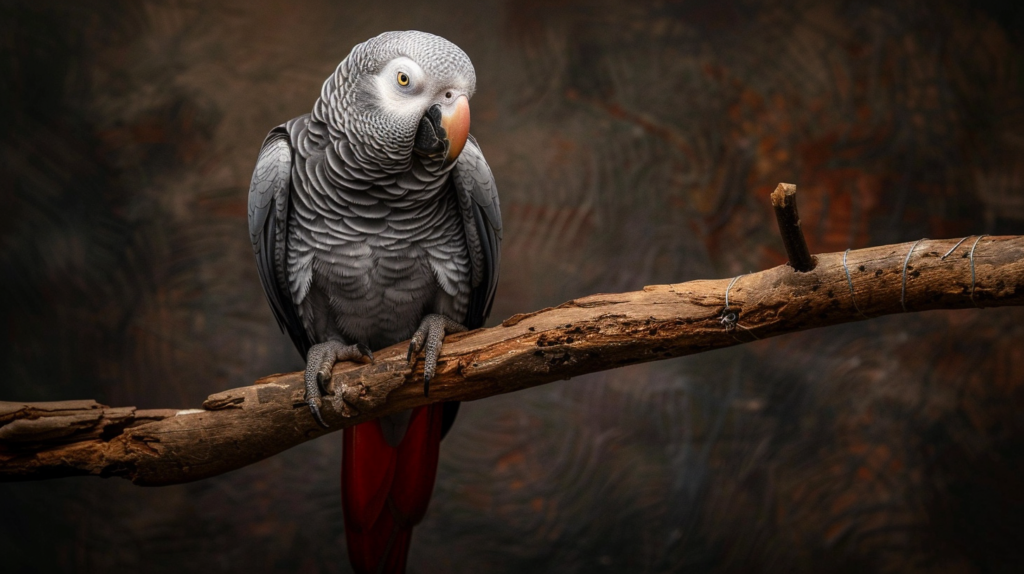
Remarkable Intelligence
The African Grey Parrot (Psittacus erithacus) stands out as perhaps the most intellectually gifted bird species on our planet. These medium-sized birds with distinctive ash-gray plumage and bright red tail feathers have cognitive abilities comparable to that of a 5-year-old human child.
Dr. Irene Pepperberg’s groundbreaking research with an African Grey named Alex revolutionized our understanding of avian intelligence. Alex demonstrated:
- A vocabulary of over 100 words
- The ability to identify colors, shapes, and materials
- Understanding of numerical concepts up to six
- Comprehension of the concept of zero (a milestone in animal cognition)
- The capacity to combine words to create new meanings
Emotional Complexity
Beyond their intellectual prowess, African Greys display remarkable emotional intelligence:
- They form deep bonds with their human companions
- Can read and respond to human emotional states
- Show signs of empathy and altruistic behavior
- Experience complex emotions like jealousy and grief
According to a 2020 study published in the Journal of Comparative Psychology, African Greys demonstrate self-control comparable to chimpanzees and gorillas in delayed gratification tests.
Conservation Status
Unfortunately, these incredible birds face significant challenges in the wild, with the International Union for Conservation of Nature (IUCN) listing them as Endangered. Population declines of 50-79% have been recorded in parts of their native Central African range due to habitat loss and capture for the pet trade.
For bird enthusiasts considering adopting one of these brilliant companions, it’s crucial to obtain them from reputable breeders and be prepared for their substantial care requirements, including extensive social interaction and mental stimulation.
2. The Lyrebird: Nature’s Master Impersonator
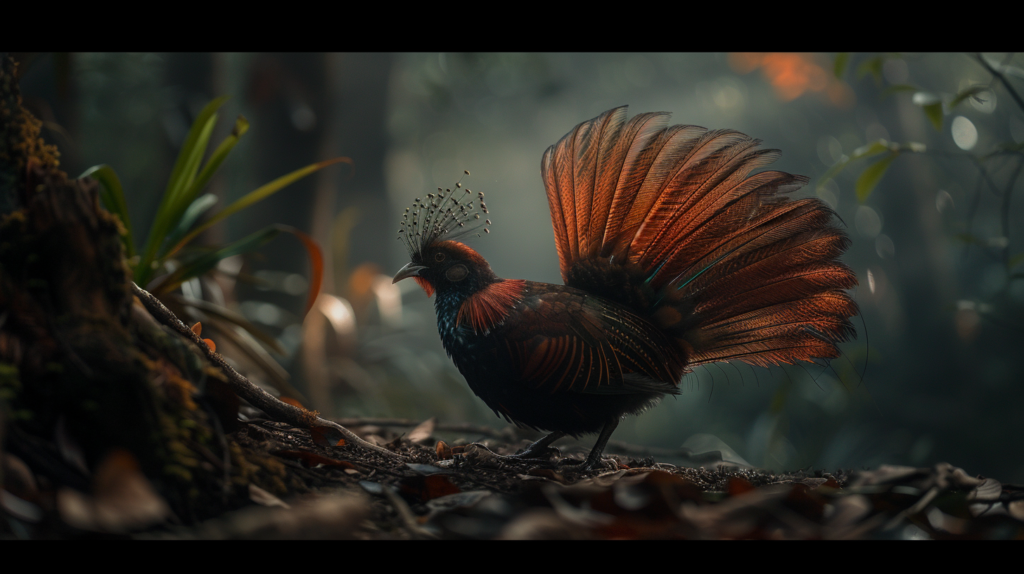
Unparalleled Vocal Mimicry
Among the coolest birds on our planet, the Superb Lyrebird (Menura novaehollandiae) of southeastern Australia possesses what may be the most sophisticated vocal apparatus in the entire animal kingdom. Their extraordinary ability to mimic sounds has made them legendary.
A male lyrebird can perfectly reproduce:
- Songs of at least 20 other bird species
- Complex environmental sounds like car alarms and chainsaws
- Camera shutters and construction equipment
- Human speech patterns
- Complete orchestral pieces
In fact, lyrebirds have been recorded mimicking the sounds of entire logging operations, including chainsaws, truck engines, and the calls of workmen. Their syrinx (avian vocal organ) is the most muscularly complex of any songbird, allowing for this incredible range of sound production.
Spectacular Courtship Display
The male lyrebird’s vocal abilities serve primarily as a courtship strategy, but their visual display is equally impressive:
- The namesake tail feathers resemble an ancient Greek lyre
- During courtship, males spread their elaborate tail feathers over their head
- They perform on specially constructed mounds in the forest
- Dance routines can last for hours, synchronized with their vocal performances
Researchers have documented that lyrebirds can remember and reproduce sounds they’ve heard only once, sometimes years prior, demonstrating exceptional long-term auditory memory.
Ecological Significance
Beyond their mimicry talents, lyrebirds play a crucial ecological role in Australian forests:
- Their constant scratching and foraging helps turn over tons of forest floor material annually
- This activity reduces fire hazards by breaking down leaf litter
- Their digging promotes soil health and seedling germination
A study from La Trobe University found that a single lyrebird can move an estimated 11 tons of soil and leaf litter per year, earning them the nickname “ecosystem engineers.”
3. The Peregrine Falcon: Earth’s Fastest Animal
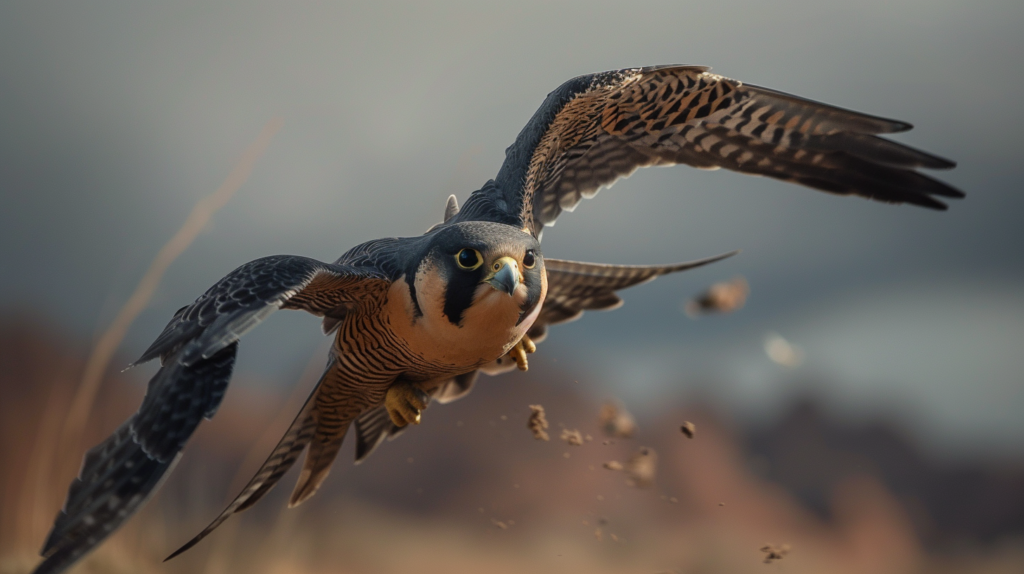
Record-Breaking Speed
When discussing cool birds, the Peregrine Falcon (Falco peregrinus) inevitably soars to the top of the list. These aerial hunters hold the distinction of being the fastest animals on Earth, capable of reaching speeds that would earn them speeding tickets on any highway.
During their hunting dives, called stoops:
- Peregrines can achieve speeds of over 240 mph (386 km/h)
- They experience g-forces that would cause a human to lose consciousness
- Their specialized respiratory system allows them to breathe during these high-speed dives
- Special baffles in their nostrils prevent damage from air pressure
To put this speed in perspective, a Formula 1 race car typically reaches top speeds of around 220 mph. The peregrine literally outraces some of our fastest vehicles.
Evolutionary Perfection
Peregrines represent the pinnacle of aerial hunting evolution:
- Tapered wings provide both maneuverability and speed
- Enhanced binocular vision can spot prey from over a mile away
- Special “third eyelid” protects their eyes during high-speed dives
- Notched beaks designed to sever prey’s spinal cord efficiently
Dr. Tom Cade, founder of The Peregrine Fund, described them as “the perfect flying machine… the culmination of 50 million years of evolutionary refinement.”
Conservation Success Story
The peregrine falcon stands as one of wildlife conservation’s greatest success stories:
- In the 1960s, DDT pesticide poisoning decimated North American populations
- By 1970, Eastern U.S. breeding populations were virtually eliminated
- Following DDT bans and captive breeding programs, peregrines made a remarkable recovery
- Removed from the U.S. Endangered Species List in 1999
Today, peregrines have adapted remarkably well to urban environments, nesting on skyscrapers and bridges while hunting pigeons and other city birds. Major cities like New York, Chicago, and Los Angeles now have thriving peregrine populations, with many buildings installing special nesting boxes to accommodate these magnificent raptors.
4. The Bird of Paradise: Nature’s Extraordinary Performers
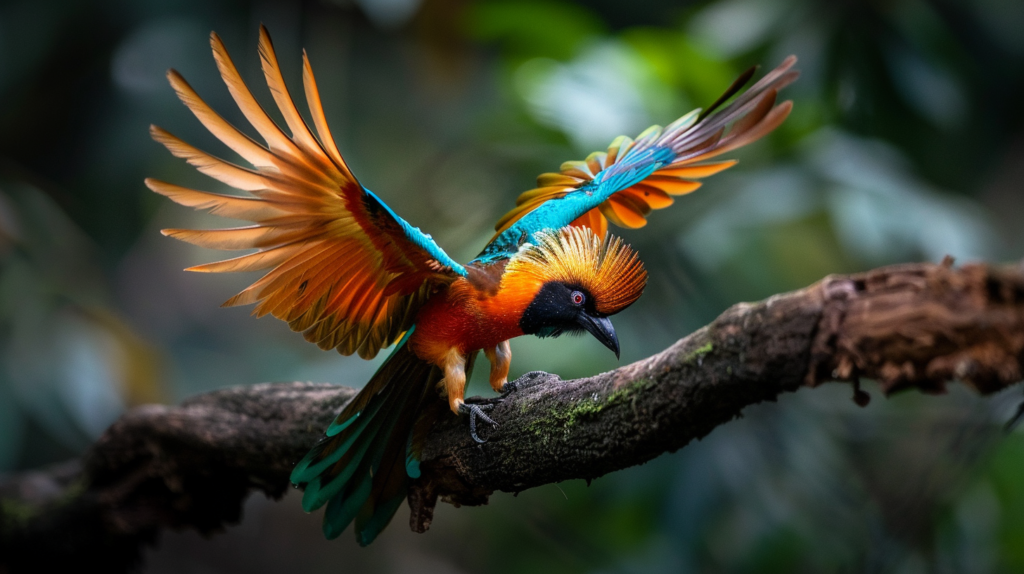
Breathtaking Displays
Among the world’s most cool birds, the 42 species of Birds of Paradise (family Paradisaeidae) native to New Guinea and surrounding islands represent evolution’s most extravagant experiment in courtship displays and plumage.
Males of various species showcase:
- Iridescent feathers that change color depending on viewing angle
- Elaborate headdresses, fans, and plumes that can be extended during display
- “Wire” feathers that extend several times the bird’s body length
- Specialized feathers that reflect super-black or vibrant blue coloration
The Superb Bird of Paradise transforms itself into what appears to be a smiling black oval with brilliant blue “eyes” through a completely unique display posture, creating one of the most alien-looking creatures on Earth.
Advanced Color Production
The physics behind their coloration is equally impressive:
- Rather than relying solely on pigments, many use structural coloration
- Microscopic feather structures manipulate light through constructive interference
- Some species produce the most intense blacks found in nature, absorbing 99.95% of light
- Wilson’s Bird of Paradise has a turquoise crown that appears to glow from within
Research published in the journal Nature Communications revealed that the super-black feathers contain microscopic structures that trap and absorb light, creating a visual effect that makes adjacent colors appear to glow more brightly.
Cultural Significance
These birds have played a significant role in human culture:
- Indigenous New Guinean tribes use their feathers in ceremonial dress
- Their images appear in traditional art throughout Melanesia
- Early European naturalists’ descriptions of these birds seemed so fantastical they were initially dismissed as myths
- David Attenborough’s groundbreaking documentation of their displays in “Planet Earth” became one of wildlife filmmaking’s most celebrated sequences
Cornell University’s Birds-of-Paradise Project has documented every species after 18 expeditions and over 2,000 hours of blind time, revealing behaviors previously unknown to science.
5. The Albatross: Masters of the Ocean Skies
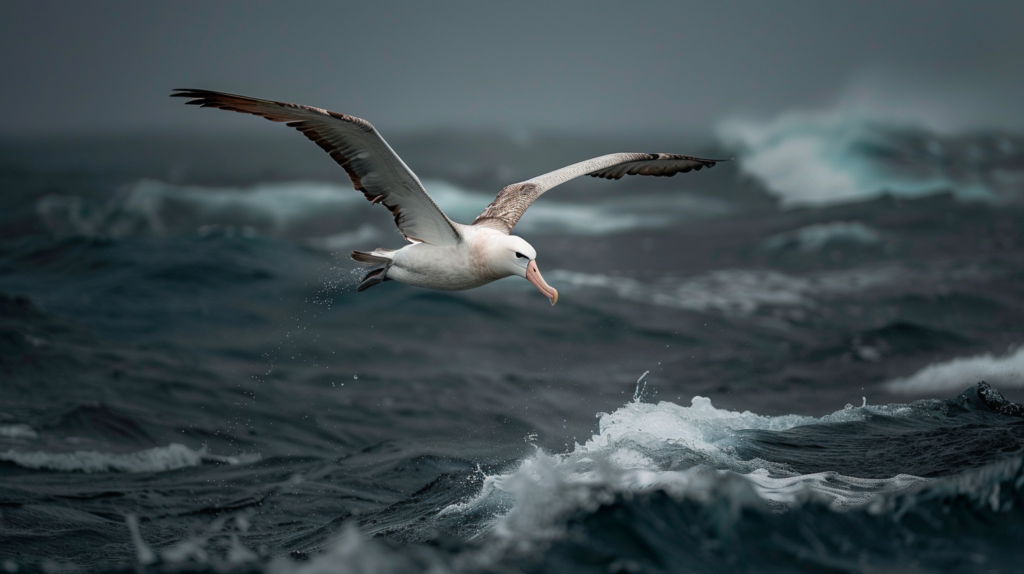
Incredible Endurance Flyers
Among the coolest birds that roam our planet’s vast oceans, albatrosses (family Diomedeidae) stand apart as the ultimate marathon flyers. These seabirds have evolved specialized adaptations that allow them to stay airborne for incredible periods with minimal effort.
The Wandering Albatross (Diomedea exulans), the largest flying bird by wingspan:
- Can maintain flight for months without landing
- Travels up to 10,000 miles in a single journey
- Uses dynamic soaring to fly with almost no wing flapping
- Has been recorded sleeping while flying
- Can live over 60 years in the wild
A 2020 tracking study published in PNAS found that albatrosses can travel up to 10,000 miles in a single foraging trip, circumnavigating the entire Southern Ocean.
Engineering Marvels
The albatross’s flight capabilities have inspired aerospace engineers:
- Their wingspan-to-weight ratio maximizes lift efficiency
- Wing-locking shoulder joints prevent muscle fatigue
- Their ability to extract energy from air currents has influenced glider design
- NASA has studied albatross flight dynamics for drone development
Dr. Henri Weimerskirch, a leading albatross researcher, noted: “Their efficiency is so extraordinary that no human-engineered flying machine comes close to matching it.”
Monogamous Relationships
Beyond their flight capabilities, albatrosses are known for their remarkable pair bonds:
- Many species mate for life, with partnerships lasting decades
- They perform elaborate courtship dances that become more synchronized over years
- Partners reunite at the same nesting site after months apart at sea
- Both parents invest heavily in raising their single chick
- If a mate is lost, the surviving bird may wait years before seeking a new partner
Unfortunately, 15 of the 22 albatross species are now threatened with extinction, primarily due to longline fishing bycatch and plastic pollution. Organizations like the Albatross Task Force work to implement fishing practices that reduce albatross mortality.
6. The Eurasian Eagle-Owl: Silent Night Hunter
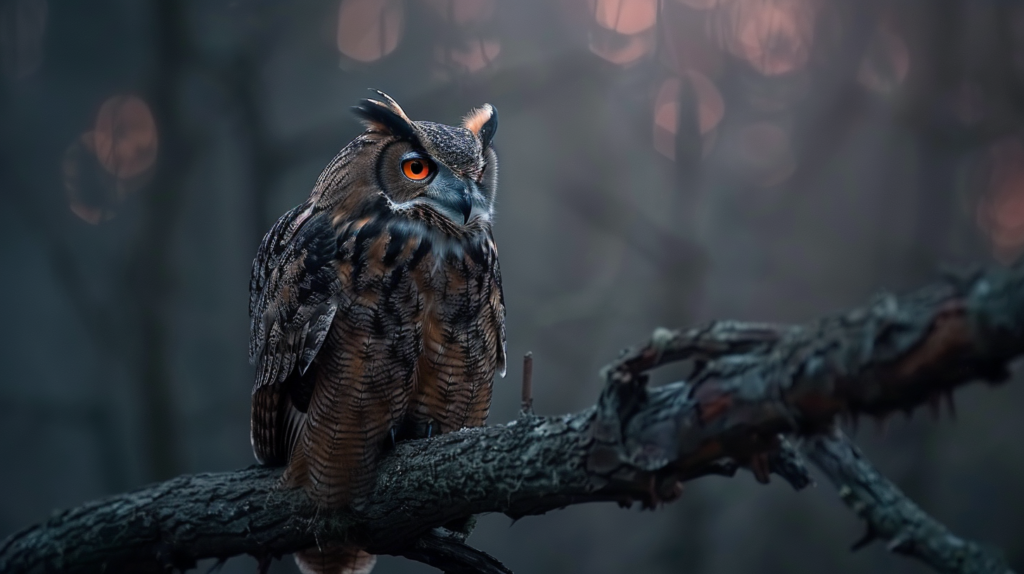
Impressive Predatory Skills
The Eurasian Eagle-Owl (Bubo bubo) stands as one of the most formidable avian predators and certainly one of the coolest birds in the raptor family. As Europe’s largest owl species, it combines imposing size with specialized hunting adaptations.
Key characteristics include:
- Wingspan reaching over 6.5 feet (2 meters)
- Lifting capacity allowing it to carry prey three times its weight
- Serrated feather edges enabling completely silent flight
- Exceptional low-light vision with eyes fixed in their sockets
- Ability to rotate their head 270 degrees to compensate for fixed eyes
- Asymmetrical ear placement for precise sound triangulation
These adaptations allow eagle-owls to detect a mouse moving under snow from over 100 feet away in complete darkness.
Versatile Diet
Unlike many raptors that specialize in specific prey, eagle-owls are opportunistic hunters with remarkably diverse diets:
- Over 200 vertebrate species have been recorded in their diet
- They regularly take prey including foxes, young deer, and other raptors
- One Finnish study documented 49 different bird species in their diet
- They’ve been observed hunting fish by hovering over water bodies
- Some populations specialize in hunting hedgehogs, despite their spines
This dietary flexibility has allowed eagle-owls to adapt to diverse habitats across Europe and Asia, from Mediterranean coastal areas to boreal forests and semi-deserts.
Cultural Significance
Throughout history, these magnificent owls have featured prominently in European folklore and mythology:
- In Ancient Greece, they were associated with Athena, goddess of wisdom
- Medieval European traditions viewed them as harbingers of doom
- Finnish mythology links them to the supernatural underworld
- Their distinctive “deep-hoooo” call has inspired numerous literary references
After near-extinction in parts of Western Europe during the 20th century due to persecution and pesticide use, conservation efforts have resulted in population recoveries across much of their range.
7. The Australian Lyrebird: Nature’s Sound Engineer
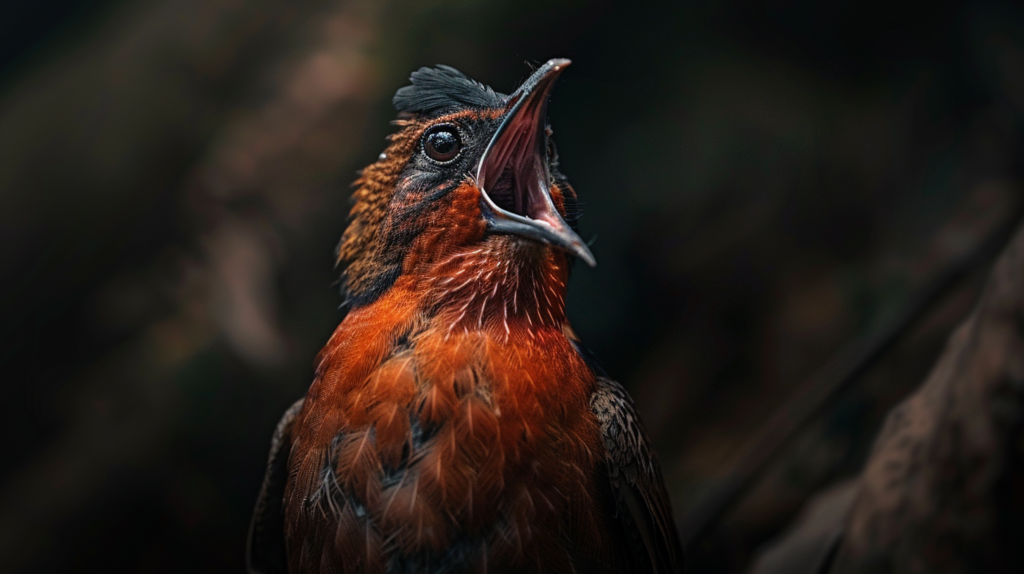
Acoustic Mimicry Extraordinaire
The Superb Lyrebird (Menura novaehollandiae) stands as perhaps the most accomplished vocal mimic in the entire animal kingdom, making it one of the coolest birds for audio enthusiasts and naturalists alike. These ground-dwelling Australian birds possess vocal abilities that border on the supernatural.
Their extraordinary mimicry includes:
- Perfect reproductions of other bird calls, including entire dawn choruses
- Mechanical sounds from chainsaws to car alarms and camera shutters
- Human voices and speech patterns
- Musical instruments and complex compositions
- Complete soundscapes of their environment
A male lyrebird can simultaneously imitate multiple bird species in sequence, creating what researchers call an “audio collage” of forest sounds. Their vocal organ (the syrinx) has unique musculature allowing for this unprecedented range of sound production.
Spectacular Visual Display
While their vocal talents steal the spotlight, lyrebirds are equally impressive visual performers:
- Males possess elaborate tail feathers forming the shape of a Greek lyre
- During courtship, they spread these feathers over their head like a shimmering canopy
- They construct special display mounds in the forest where they perform
- Each male maintains multiple display sites throughout his territory
- Dance routines synchronize precisely with their vocal performances
Ornithologist Richard Dawkins described the lyrebird as “without doubt the most accomplished mimic in the world,” noting their ability to remember and reproduce sounds heard only once, sometimes years earlier.
Ecological Engineers
Beyond their performance abilities, lyrebirds play a crucial role in Australian forest ecosystems:
- Their constant foraging behavior turns over vast amounts of forest floor material
- A single bird can move up to 11 tons of soil and debris annually
- This activity promotes nutrient cycling and seedling growth
- Their digging reduces forest fire hazards by breaking down leaf litter
- They help control insect populations in forest understories
Conservation efforts for lyrebirds focus on habitat preservation, as these remarkable birds require undisturbed, mature forests with dense understory vegetation to thrive.
8. The Secretary Bird: Africa’s Snake Hunter
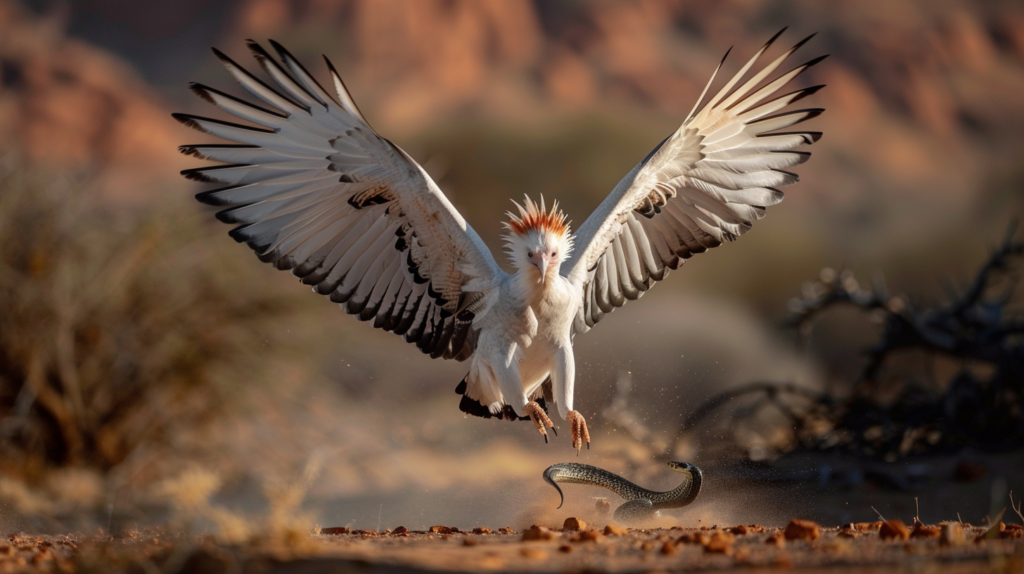
Unique Hunting Strategy
Among the coolest birds of prey, the Secretary Bird (Sagittarius serpentarius) of sub-Saharan Africa stands out for its extraordinary appearance and hunting technique. Unlike most raptors that rely on talons and beaks, secretary birds are specialized for terrestrial hunting using a completely different approach.
Their distinctive hunting method involves:
- Stomping prey with incredible force and precision
- Delivering kicks with an impact force five times their body weight
- Striking speeds clocked at 15 feet per second
- The ability to kill venomous snakes without being bitten
- A “calculated attack” strategy that researchers compare to martial arts
High-speed camera studies from the University of Cape Town revealed that secretary birds can deliver a killing blow in less than 0.15 seconds—faster than a snake can strike.
Unmistakable Appearance
The secretary bird’s striking appearance makes it instantly recognizable:
- Standing up to 4 feet tall on crane-like legs
- Distinctive black “quill-pen” crest feathers resembling secretaries with pencils behind their ears (hence the name)
- Eagle-like head atop a crane-like body
- Gray and black plumage with bare orange-red facial skin
- Extraordinarily long eyelashes that protect their eyes during hunts
This unique morphology represents an evolutionary path distinct from other raptors, combining features of both eagles and ground birds into a single specialized hunting form.
Conservation Concerns
Despite their adaptability, secretary birds face mounting threats:
- Habitat loss due to agricultural expansion
- Collisions with power lines and vehicles
- Secondary poisoning from pesticides
- Bush encroachment reducing their preferred grassland habitat
- Classified as Endangered by the IUCN since 2020
Conservation initiatives focus on grassland preservation and creating protected corridors between habitat fragments. Satellite tracking studies have revealed these birds require larger territories than previously thought, complicating conservation efforts.
9. The Hoatzin: The Living Fossil Bird
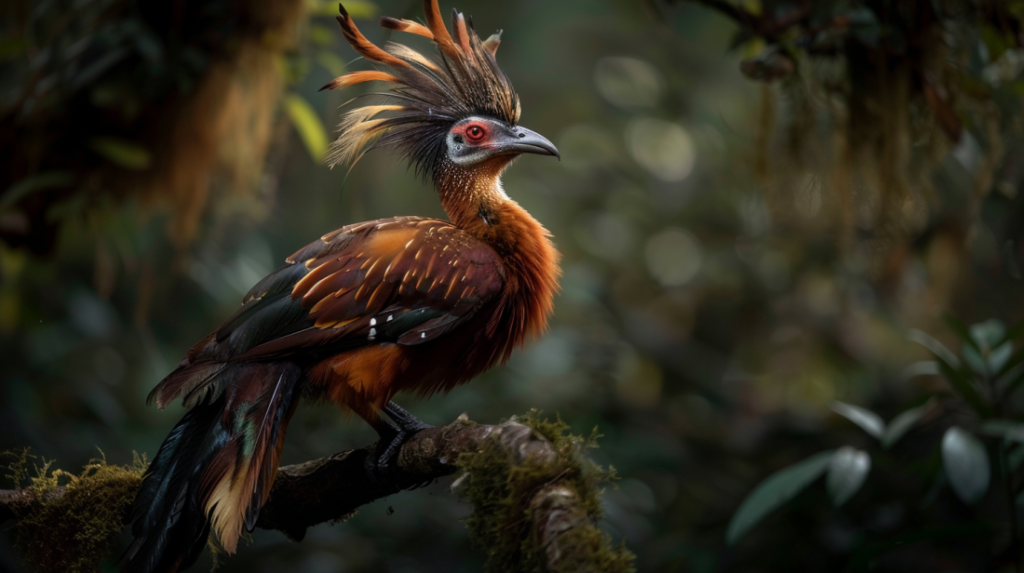
Prehistoric Features
Often referred to as one of the strangest and coolest birds on Earth, the Hoatzin (Opisthocomus hoazin) of South American rainforests represents a unique evolutionary branch that has puzzled scientists for centuries. These remarkable birds possess characteristics reminiscent of the earliest avian ancestors.
Among their most primitive features:
- Chicks are born with functional claws on their wings
- These claws allow youngsters to climb trees before they can fly
- Unique digestive system more similar to cows than other birds
- Fermentation chambers in their enlarged crop for bacterial digestion
- Distinctive skeleton unlike any other living bird species
Genetic studies suggest the Hoatzin may have diverged from other birds over 64 million years ago, potentially making it the sole survivor of an ancient avian lineage.
Distinctive Characteristics
Beyond their evolutionary significance, Hoatzins possess several remarkable adaptations:
- Strong, unpleasant odor (earning them the nickname “stinkbird”)
- This scent derives from their unique digestive process
- Spiky, mohawk-like crest giving them a perpetually disheveled appearance
- Bright blue facial skin contrasting with rust-colored plumage
- Weak flight abilities compensated by excellent swimming and diving skills
When threatened, Hoatzin chicks employ a remarkable escape strategy: they drop from their nests into water below, swim to safety, and then use their wing claws to climb back to their nests—a behavior seen nowhere else in modern birds.
Cultural and Scientific Importance
The Hoatzin holds special significance:
- Featured in indigenous Amazonian mythology as a connection to ancient times
- Subject of one of ornithology’s longest-running classification debates
- Important indicator species for healthy rainforest ecosystems
- Subject of ongoing evolutionary and genetic research
- Popular ecotourism attraction in countries like Brazil and Venezuela
While not currently endangered, Hoatzins face increasing pressure from habitat loss as Amazon rainforests continue to be cleared for agriculture and development.
10. The Shoebill Stork: Prehistoric-Looking Giant
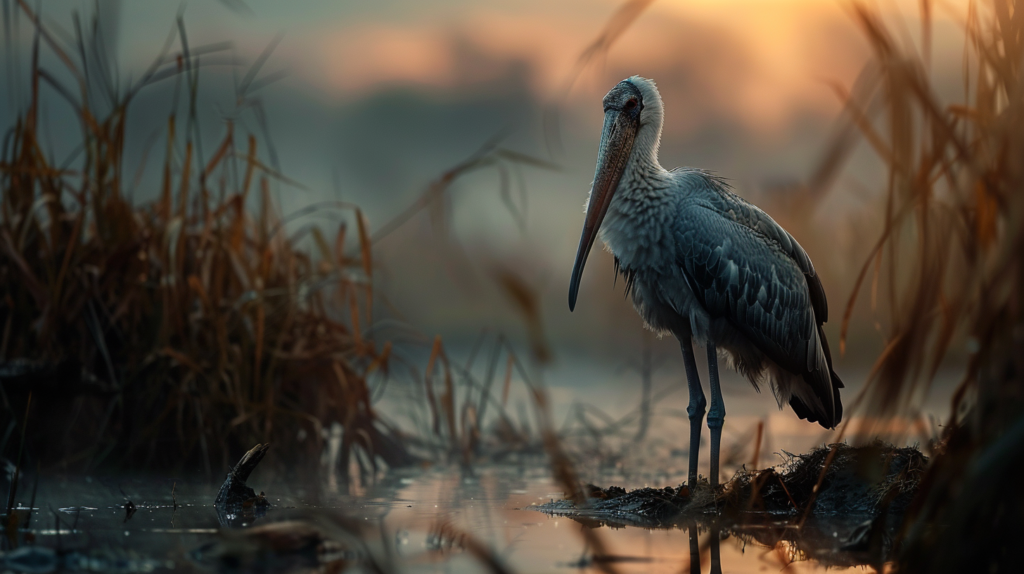
Living Dinosaur Appearance
Rounding out our list of cool birds is the Shoebill (Balaeniceps rex), a massive wading bird native to the swamps of East Africa that looks like it stepped straight out of the Mesozoic era. With its imposing stature and prehistoric appearance, the Shoebill captivates all who encounter it.
Striking physical characteristics include:
- Massive shoe-shaped bill giving the species its name
- This bill can grow up to 24 cm (9.5 inches) long and 10 cm (4 inches) wide
- Height reaching 5 feet (1.5 meters) with wingspan up to 8 feet (2.4 meters)
- Piercing yellowish eyes that rarely blink
- Ability to remain motionless for hours while hunting
- Pale blue-gray plumage that enhances their ancient appearance
Wildlife photographer Nick Brandt described the Shoebill as “looking more like a character from a Lewis Carroll story than a real bird,” capturing the surreal impression they make on observers.
Specialized Hunting Techniques
Behind their somewhat comical appearance lies a highly specialized predator:
- Capable of decapitating large lungfish and baby crocodiles with their bill
- Strike speed comparable to the fastest snake strikes
- Bill edges have sharp ridges that can slice through prey
- Practice “collapsing” technique to capture fish in shallow water
- Can stand motionless for hours before striking with explosive speed
A 2018 study in the Journal of Zoology documented Shoebills waiting an average of 2.1 hours between successful strikes—requiring extraordinary patience for a predatory species.
Rare and Elusive
Adding to their mystique, Shoebills are among Africa’s most elusive large birds:
- Total population estimated at only 5,000-8,000 individuals
- Listed as Vulnerable on the IUCN Red List
- Live in remote, often inaccessible swamplands
- Extremely sensitive to human disturbance during breeding
- Each pair requires up to 2.5 square miles of undisturbed wetland
Conservation efforts focus on protecting their specialized habitat, particularly the Sudd wetlands of South Sudan and the swamps of Uganda, which support significant portions of the remaining population.
The Fascinating World of Avian Diversity
The incredible diversity of cool birds we’ve explored represents just a fraction of the approximately 10,000 bird species that inhabit our planet. From intelligence rivaling primates to physical abilities exceeding our fastest vehicles, birds have evolved extraordinary adaptations that continue to astonish scientists and bird enthusiasts alike.
These feathered marvels demonstrate:
- Complex problem-solving abilities
- Record-breaking physical capabilities
- Stunning visual displays
- Remarkable vocal talents
- Specialized hunting techniques
- Evolutionary innovations
Birds occupy virtually every habitat on Earth, from polar ice to scorching deserts, deep forests to open oceans. Their adaptability and evolutionary success story continues to provide valuable insights into biology, ecology, and even engineering, as humans draw inspiration from their remarkable adaptations.
For more expert pet care tips and product recommendations, visit BlithePet.com — your trusted source for pet wellness.
Frequently Asked Questions (FAQ)
What makes a bird species considered “cool” or unique?
Birds earn the “cool” designation through various exceptional traits, including remarkable intelligence (like African Grey Parrots), extraordinary physical abilities (such as the Peregrine Falcon’s speed), unusual appearance (like the Shoebill), or specialized behaviors (such as the Lyrebird’s mimicry). These standout characteristics represent extraordinary evolutionary adaptations that set certain species apart from more common birds.
Can any of these cool birds be kept as pets?
While some species like African Grey Parrots are popular as pets, many of the world’s coolest birds are wild species that are either protected, endangered, or completely unsuitable for captivity. African Greys require extensive social interaction, mental stimulation, and specialized care. Always research thoroughly and consult with avian specialists before considering any bird as a pet, and ensure any bird is ethically and legally sourced.
Which bird is considered the most intelligent?
The African Grey Parrot is widely recognized as the most intelligent bird species, with cognitive abilities comparable to that of a 5-year-old human child. Research has demonstrated their capacity for abstract reasoning, numerical comprehension, emotional intelligence, and linguistic abilities far beyond simple mimicry. Other notably intelligent birds include ravens, crows, and New Caledonian crows, which demonstrate sophisticated tool use.
What threats do these amazing bird species face?
Many of these remarkable birds face significant conservation challenges, including habitat loss, climate change, illegal wildlife trade, and pollution. Several species, including the African Grey Parrot and Shoebill, are listed as vulnerable or endangered. Conservation efforts focus on habitat protection, breeding programs, and combating illegal trade. Supporting organizations dedicated to bird conservation is crucial for ensuring these species’ survival.
How do birds develop such colorful and elaborate plumage?
The striking plumage seen in many cool birds results from both pigmentation and structural coloration. While pigments like melanin and carotenoids create basic colors, the most vibrant displays often come from microscopic feather structures that manipulate light waves. These nanostructures create iridescence and ultraviolet patterns often invisible to human eyes but crucial for bird communication and mate selection. Diet also plays a significant role in developing and maintaining vibrant plumage.
Where can I observe some of these extraordinary birds in the wild?
Dedicated birdwatchers can observe many of these species in their natural habitats through specialized ecotourism programs. African Grey Parrots can be seen in Central African rainforests, Birds of Paradise require trips to Papua New Guinea, Lyrebirds inhabit Australian forests, and Shoebills can be observed in East African wetlands. Conservation-focused tour operators often offer guided experiences that support local protection efforts while providing opportunities to witness these remarkable birds.
Conclusion
From the remarkable intelligence of the African Grey Parrot to the prehistoric appearance of the Shoebill, our exploration of the world’s coolest birds reveals nature’s extraordinary creativity and the remarkable adaptations that have evolved over millions of years. These avian wonders demonstrate that evolutionary success comes in countless forms, each species representing a unique solution to the challenges of survival.
Whether you’re considering adding an avian companion to your home or simply appreciate the wonders of the natural world, these remarkable birds remind us of the incredible diversity that makes our planet so special. By understanding and protecting these feathered marvels, we ensure that future generations can continue to be inspired by their remarkable abilities and striking beauty.
Have a similar experience with birds or a favorite species not featured here? Share it in the comments below!

